All Departments
- Aortic valve stenosis (Aortic stenosis)
- arteriovenous malformations
- Avascular Necrosis
- Best cosmetic dentistry in Iran| Dental Treatment in Iran
- Breast Augmentation in Iran|Breast implant in iran
- Breast Reduction surgery
- Cancer in Iran: oncology in Iran
- Cardiology
- Cataract surgery in Iran
- Cochlear Implant Surgery in Iran
- Cosmetic Laser
- Cosmetic Surgery
- Ear cosmetic surgery
- Eye Care
- Eyelid surgery (Blepharoplasty)
- General Heart Surgery in Iran
- General surgery in Iran
- Glaucoma Treatment In Iran
- Hair Transplant
- Heart valve surgery
- lasik Eye Surgery
- Liposuction
- Non-Surgical Cosmetic procedures in iran
- Organ Transplantation in Iran
- Orthopedic
- Paget disease of bone
- Pediatrics
- Plastic surgery
- Psychiatry
- Radiology
- Rhinoplasty surgery in iran
- Shoulder Replacement Surgery
- SkinCare Treatment
- Spinal cord injury
- urolithiasis procedure in iran
- Urology
- Varicocelectomy
Opening Hours

Hair Transplant


Opting for hair transplant in Iran presents a cost-effective and dependable choice in comparison to neighboring countries and European nations. Iran not only offers lower treatment costs but also maintains an exceptional quality of care for hair restoration procedures. With a multitude of highly skilled and experienced hair transplant surgeons specializing in various techniques, including FUE and FUT, you can trust in their proficiency to deliver the results you desire. These specialists remain abreast of the latest advancements in hair transplant technology, assuring patients of top-tier care. With affordable prices and a wealth of expertise, Hair transplant in Iran emerges as a compelling option for those seeking effective and budget-friendly hair restoration solutions.
hair transplant in iran
Hair transplant, or hair restoration surgery, is a popular method for recovering and regrowing lost or insufficient hair. In this procedure, healthy hair is harvested from various areas of the body and transplanted into areas with hair loss or thinning. This process is performed by specialized surgeons using various techniques, including FUE (Follicular Unit Extraction) and FUT (Follicular Unit Transplantation). Hair transplant helps individuals regain their confidence by restoring natural and attractive hair to their scalp, effectively addressing the issue of baldness.


Ipdtourism is your trusted partner for all your hair transplant needs in Iran. Our dedicated team specializes in providing comprehensive and hassle-free solutions for international patients seeking top-quality hair transplant procedures. From the moment you decide to embark on your hair restoration journey to the successful completion of the treatment, Ipdtourism takes care of every detail.
What Is a Hair Transplant?
Hair transplant is a surgical procedure that involves moving hair follicles from one part of the body (usually the back or sides of the head, where hair is more resistant to balding) to the balding or thinning areas of the scalp. The goal of the procedure is to restore hair growth in areas where hair has been lost or has become thin, resulting in a fuller, natural-looking head of hair.
There are two main techniques for hair transplant: Follicular Unit Extraction (FUE) and Follicular Unit Transplantation (FUT). Both techniques involve harvesting hair follicles from the donor area, preparing them for transplantation, and then implanting them into the recipient area.
FUE involves removing individual hair follicles from the donor area using a small, circular punch tool. The follicles are then implanted into the recipient area using tiny incisions. FUT, on the other hand, involves removing a strip of skin from the donor area and dissecting it into individual follicular units, which are then transplanted into the recipient area.
Hair transplant is typically performed under local anesthesia as an outpatient procedure, which means that the patient can go home the same day. The recovery period can vary depending on the technique used, but most patients can return to work and normal activities within a week or two. It is important to note that hair transplant is a surgical procedure and carries some risks and potential complications, so it is important to choose a qualified and experienced surgeon and to carefully follow post-operative instructions.
how does hair transplant work?
Hair transplant surgery is a procedure that involves moving healthy hair follicles from one part of the scalp, called the donor area, to another part of the scalp, called the recipient area. The two main techniques used in hair transplant surgery are Follicular Unit Extraction (FUE) and Follicular Unit Transplantation (FUT).
In FUE, individual hair follicles are harvested from the donor area using a small punch tool, typically between 0.6mm to 1mm in diameter. The follicles are then transplanted to the recipient area using tiny incisions or slits. The surgeon carefully places the follicles in a way that mimics the natural growth pattern of hair, ensuring that the transplanted hair looks natural and blends in with the surrounding hair.
In FUT, a strip of skin is removed from the donor area and hair follicles are extracted from the strip under a microscope. The follicles are then transplanted to the recipient area in the same way as in FUE.
Both FUE and FUT techniques require local anesthesia, and the patient may be given medication to help them relax during the procedure. The transplanted hair follicles initially shed after the surgery, but new hair growth typically starts to appear within a few months. It is important to follow post-operative instructions carefully to ensure the best possible results.
hair transplant surgery is generally considered a permanent solution to hair loss. This is because the hair follicles that are transplanted are typically taken from areas of the scalp that are not affected by male or female pattern baldness, and are therefore genetically programmed to continue growing hair throughout a person’s lifetime.
However, it is important to note that hair transplant surgery does not prevent further hair loss in other areas of the scalp. It is possible for a person to continue experiencing hair loss in other areas, which may require additional hair transplant surgeries or other hair loss treatments.
hair transplant before and after:




The cost of hair transplant surgery in Iran is influenced by a variety of factors, including the strength of the hair follicles in the donor area, the size of the balding area, the number of hair grafts needed, the experience and qualifications of the surgeon, and the quality of the clinic’s facilities and equipment.
On average, the cost of hair transplant surgery in Iran is between $1000 and $2500, which is significantly lower than the cost of the same procedure in many other countries. For example, hair transplant surgery in America and European countries can cost between $4000 and $16000, while in India and Turkey, the cost ranges from $2000 to $4000.
It’s important to note that the cost of hair transplant surgery can vary depending on the individual’s unique needs and the clinic’s location and reputation. Patients should always choose a reputable and experienced surgeon and research the clinic thoroughly to ensure they receive the best possible care.
Overall, Iran offers a cost-effective option for those seeking high-quality hair transplant surgery, without having to compromise on the quality of care or experience of the surgeon.
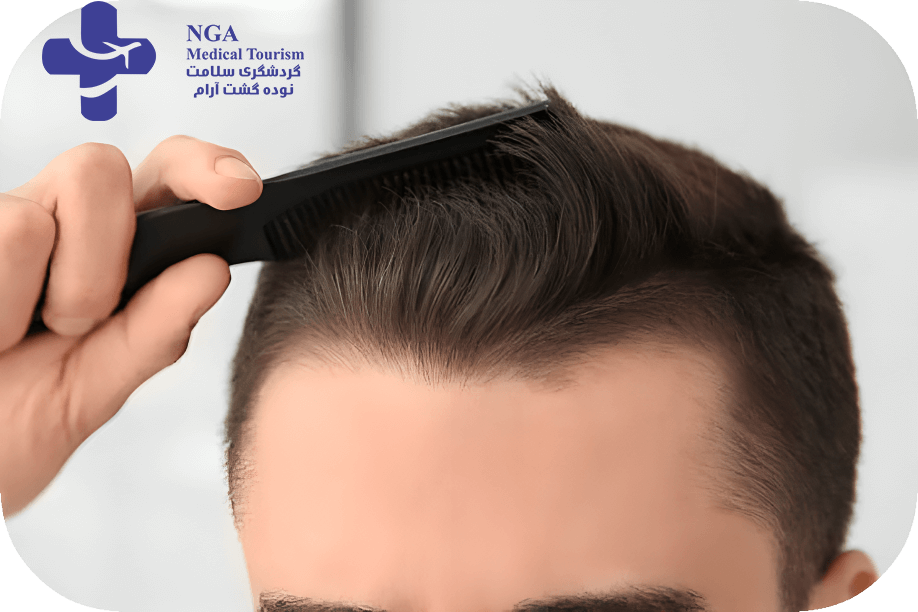
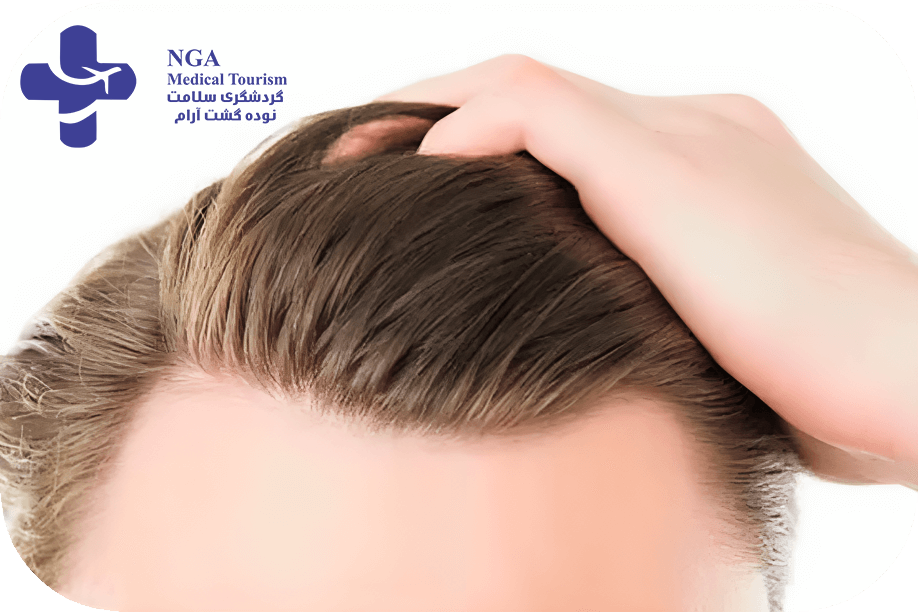
fue hair transplant
A FUE (Follicular Unit Extraction) hair transplant is a type of hair restoration surgery that involves harvesting individual hair follicles from a donor area, typically at the back of the scalp, and transplanting them to balding or thinning areas of the scalp. The harvested follicles are extracted using a small punch tool and then transplanted to the recipient area using tiny incisions. FUE is considered a minimally invasive technique and can produce natural-looking results, with minimal scarring and downtime. However, FUE hair transplant surgery can be time-consuming and may require multiple sessions to achieve the desired results.
Hair transplant procedures in Iran typically involve two primary techniques: Follicular Unit Extraction (FUE) and Follicular Unit Transplantation (FUT). In FUE, individual hair follicles are extracted from the donor area and implanted into the recipient area. FUT, on the other hand, involves removing a strip of skin, dissecting it into follicular units, and then transplanting them. Both techniques are outpatient procedures performed under local anesthesia, with a recovery period of about one to two weeks. Following post-operative instructions is crucial for a successful and safe outcome.
Hair transplant is a surgical procedure, and it is important to follow the post-operative instructions carefully to ensure a successful and safe recovery. Here is what to expect during the recovery period after hair transplant:
1. First few days: After the procedure, you may experience some discomfort, swelling, and redness in the donor and recipient areas. You may also have some scabbing and crusting around the implanted follicles. It is important to avoid scratching or picking at the scabs to prevent infection or damage to the follicles.
2. First week: You may need to take some time off from work and avoid strenuous activities, including exercise and heavy lifting, for at least a week after the procedure. You should also avoid exposing the scalp to direct sunlight and wear a hat when going outside.
3. First month: You may notice some shedding of the transplanted hair during the first month after the procedure, which is a normal part of the healing process. The transplanted hair will gradually start to grow back over the next several months.
4. First six months: You may start to see some new hair growth in the recipient area after about three to six months. However, it may take up to a year or more to see the full results of the procedure.
During the recovery period, it is important to follow the post-operative instructions provided by your surgeon, which may include taking medication to prevent infection and promote healing, avoiding certain foods and drinks, and using special shampoos or other hair care products. It is also important to attend follow-up appointments with your surgeon to monitor your progress and ensure a successful outcome.
Read More: Rhinoplasty Surgery In Iran
Read More: Revision Rhinoplasty In Iran 2023 | Best Surgeons And Low Cost
Read More: What Is The Best Nose Shape?
Read More: Upturned Nose Surgery In Iran
hair transplant time lapse:
After a hair transplant surgery, it can take several months to see noticeable results, and it may take up to a year or more for the full results to be visible. The timeline for hair growth after a hair transplant surgery can vary depending on several factors, including:
The type of hair transplant surgery: FUE and FUT hair transplant surgeries have different recovery times and timelines for hair growth. FUE typically has a shorter recovery time and faster hair growth.
The extent of the hair loss: The more extensive the hair loss, the longer it may take to see noticeable results, as more transplanted hair follicles are required to cover the balding areas.
The quality and quantity of donor hair: The success of a hair transplant surgery depends on the availability of healthy donor hair follicles and the skill of the surgeon in harvesting and transplanting them.
The patient’s healing process: Every individual’s body heals at a different rate, and some people may experience faster or slower healing times.
Typically, within the first few weeks after a hair transplant surgery, the transplanted hair follicles will shed, which is a normal part of the healing process. New hair growth will typically start to appear within a few months. By six months after the surgery, the transplanted hair may start to look natural, and by 12 months, the full results of the hair transplant surgery may be visible.
hair transplant results:

advantages of hair transplant in Iran
- Affordable Cost
- High-Quality Medical Facilities
- Skilled and Experienced Surgeons
- Advanced Technology and Techniques
- Extensive Medical Tourism Infrastructure
- Multilingual Staff
- Cultural and Touristic Attractions
- Short Waiting Times
- Excellent Post-Operative Care
- Positive Patient Experiences
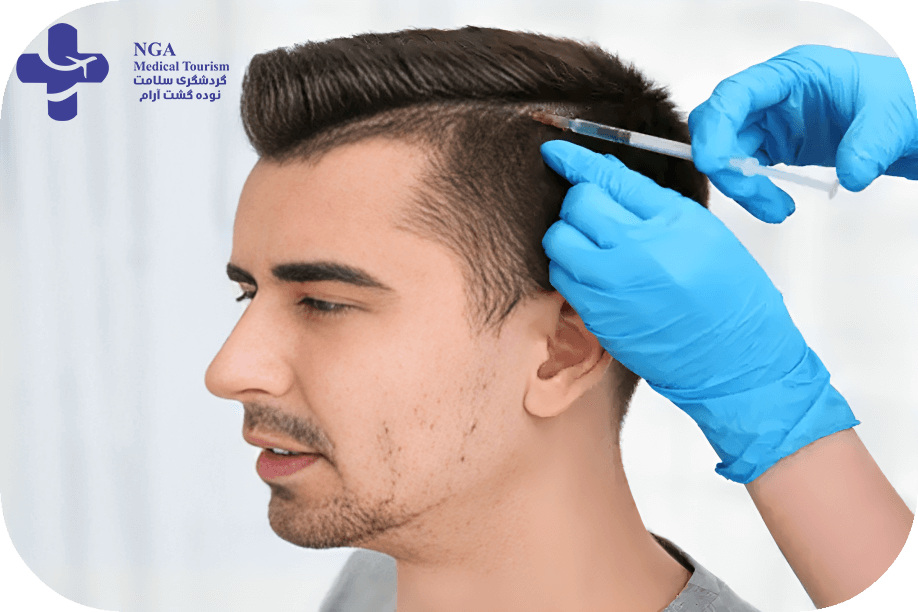

hair transplant side effects
Possible complications of hair transplant include:
- Infection
- Bleeding
- Scarring
- Swelling
- Itching or discomfort
- Numbness or lack of sensation
- Shock loss (temporary shedding of transplanted hair)
- Folliculitis (inflammation of hair follicles)
- Cysts
- Uneven or unnatural-looking hair growth.
failed hair transplant
While hair transplant surgery is generally considered a safe and effective procedure, as with any surgical procedure, there is a risk of complications and potential for unsatisfactory results. Some possible complications that can occur during or after hair transplant surgery include:
- Infection
- Bleeding
- Scarring
- Poor growth
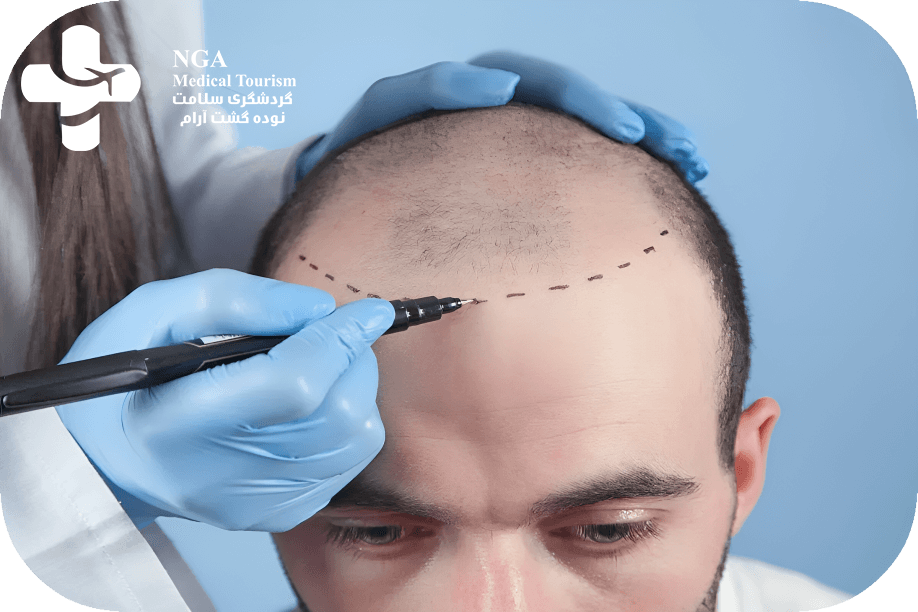
after hair transplant
Here are some tips to follow after a hair transplant to ensure a successful recovery:
1. Follow your surgeon’s instructions: Your surgeon will provide you with specific instructions on how to care for your scalp after the procedure. It is important to follow these instructions carefully to avoid complications and ensure proper healing.
2. Avoid strenuous activities: For the first few days after the procedure, avoid strenuous activities, such as exercise, heavy lifting, and bending over. This can help prevent swelling and bleeding.
3. Avoid direct sunlight: Direct sunlight can damage the newly transplanted hair follicles and cause sunburn. Cover your head with a hat or stay in the shade for the first few weeks after the procedure.
4. Avoid alcohol and smoking: Alcohol and smoking can slow down the healing process and increase the risk of infection. Avoid these substances for several weeks after the procedure.
5. Avoid touching or scratching the scalp: Touching or scratching the scalp can dislodge the newly transplanted hair follicles and increase the risk of infection. Avoid touching or scratching the scalp, and avoid wearing tight-fitting hats or helmets.
6. Use gentle shampoos and hair care products: Your surgeon may recommend a specific shampoo or hair care product to use after the procedure. Use gentle, non-irritating products and avoid harsh chemicals or dyes.
7. Attend follow-up appointments: Your surgeon will schedule follow-up appointments to monitor your progress and ensure a successful outcome. Attend these appointments and follow any additional instructions your surgeon provides.
Remember, hair transplant is a surgical procedure, and proper post-operative care is essential for a successful outcome. If you have any questions or concerns during the recovery period, contact your surgeon for guidance.
Hair Transplant for women
Hair transplant is a viable option for women experiencing hair loss, often caused by genetic factors, hormonal changes, or aging. The procedure is similar to that for men but with some distinctions. Women typically use the back or sides of the head as the donor area, although other body parts like the chest or legs can be considered. Hairline design tends to be more rounded and softer for a natural look, and women may require lower hair density due to finer hair texture. Hormonal factors, like those during pregnancy or menopause, should be considered for successful outcomes. Consulting with an experienced surgeon familiar with female hair transplant is crucial to explore options and potential risks and benefits.
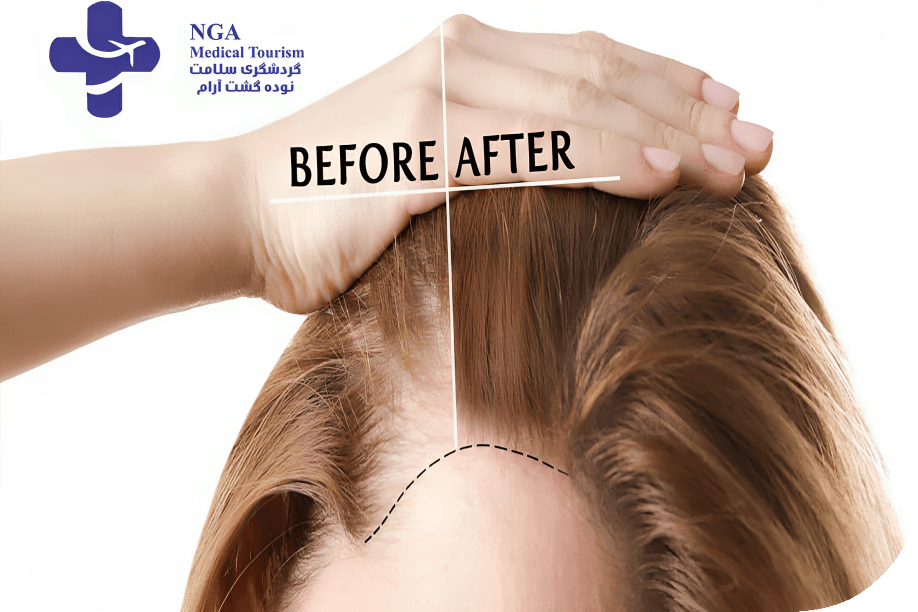
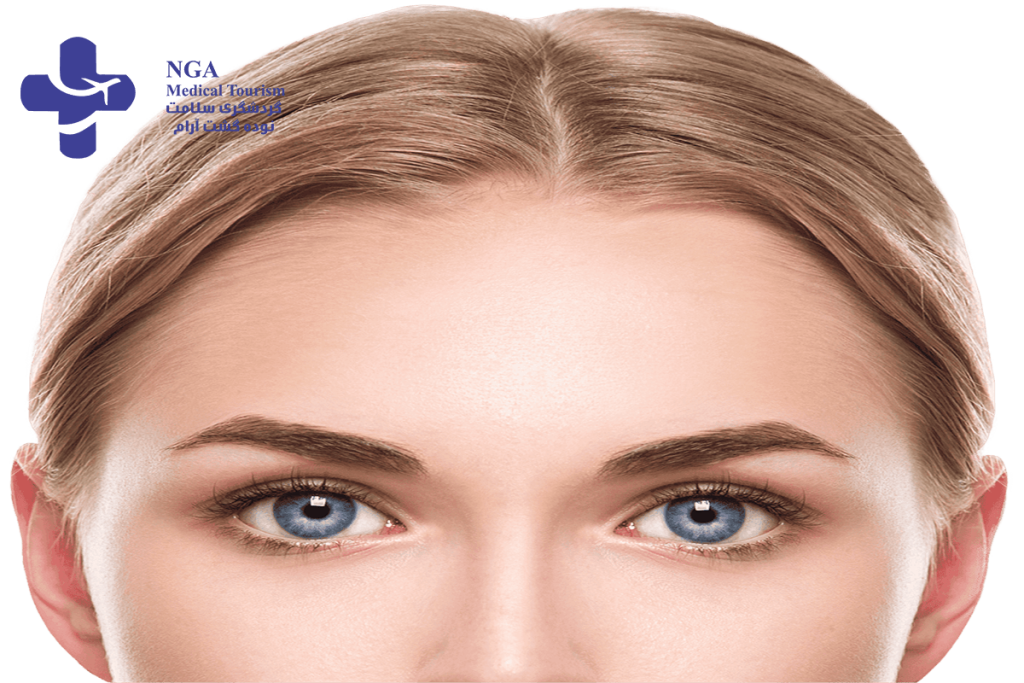
EYEBROW TRANSPLANT IN IRAN
Eyebrow transplant in Iran involves moving hair follicles from one body area to the eyebrows to enhance fullness. This outpatient procedure, performed under local anesthesia, is akin to scalp hair transplants, using FUE or FUT techniques. Recovery includes swelling, redness, and scabbing. Precise surgeon selection is crucial for natural-looking results, and post-operative care, such as sun avoidance and avoiding rubbing the transplanted area, is essential for success.
hair transplant on scar
Hair transplant surgery can effectively address scars, including those from prior hair transplants or other scalp scars. The success of such a procedure depends on factors like scar size and location, available donor hair quality and quantity, and the surgeon’s expertise. Surgeons can employ FUE or FUT techniques to harvest follicles from healthy areas nearby and transplant them onto the scar. Strategic placement of transplanted follicles mimics natural hair growth, camouflaging the scar for a more natural look. It’s essential to note that scar-related hair transplants may demand increased surgical skill, more time, and potentially multiple sessions for optimal results due to the unique challenges presented by scar tissue.

Iran has become a popular destination for hair transplant for several reasons:
1. High-Quality Medical Facilities: Iran has a well-developed healthcare system with modern medical facilities and equipment that are on par with those found in developed countries. Many of the clinics that offer hair transplant in Iran are accredited and staffed by experienced and highly skilled surgeons.
2. Experienced Surgeons: Iran has a long history of medical education and research, and many Iranian surgeons have received training and education from some of the world’s leading medical institutions. As a result, Iranian hair transplant surgeons are well-known for their skill and expertise in the field.
3. Lower Costs: Hair transplant in Iran is generally less expensive than in many other countries, making it an affordable option for people seeking the procedure. The lower cost is due to a combination of factors, including lower overhead costs for clinics and lower labor costs for surgeons and staff.
4. Tourism Opportunities: Iran is a country with a rich cultural heritage and many tourist attractions, making it an attractive destination for people who want to combine their hair transplant procedure with a vacation.
However, it is important to choose a reputable clinic with experienced surgeons and to carefully research the potential risks and benefits of the procedure before deciding to travel to Iran or any other country for hair transplant.
Hair transplant surgery is a surgical procedure that involves transplanting healthy hair follicles from one part of the scalp to another. The two main techniques used in hair transplant surgery are Follicular Unit Extraction (FUE) and Follicular Unit Transplantation (FUT). FUE involves harvesting individual hair follicles from the donor area and transplanting them to the recipient area using tiny incisions. FUT involves removing a strip of skin from the donor area and extracting hair follicles from the strip, which are then transplanted to the recipient area. Hair transplant surgery is generally considered a safe and effective solution for hair loss, but it is important to choose a qualified and experienced surgeon and to follow post-operative instructions carefully to minimize the risk of complications and ensure the best possible results.
Read More: Lasik eye surgery in Iran Question and Answer
Read More: Eye Surgery cost in Iran (Lasik&Refractive Surgery,Cataract)
Read More: lasik Eye Surgery in Iran
Read More: Glaucoma Treatment In Iran
Read More: Cataract surgery in Iran
The cost of hair transplant surgery in Iran varies depending on several factors such as the extent of the procedure, the number of grafts required, and the experience of the surgeon. On average, hair transplant surgery in Iran costs between $1000 and $2500.
The duration of hair transplant surgery in Iran depends on the extent of the procedure and the number of grafts required. A typical hair transplant surgery can take anywhere from 4 to 8 hours.
Yes, hair transplant surgery in Iran is safe when performed by a qualified and experienced surgeon in a reputable clinic or hospital. Iranian doctors are highly trained and skilled in hair transplant surgery, and they use the latest techniques and technologies to ensure optimal results.
It usually takes several months to see the full results of hair transplant surgery in Iran. The transplanted hair follicles need time to establish a blood supply and begin producing new hair.
Like any surgical procedure, hair transplant surgery in Iran carries some risks and potential side effects such as bleeding, infection, scarring, and swelling. However, these risks are relatively low and can be minimizedby choosing a qualified and experienced surgeon and following post-operative care instructions. Your surgeon will discuss any potential risks or side effects with you before the procedure.
Yes, women can undergo hair transplant surgery in Iran. Hair loss is not limited to men, and women may also experience hair loss due to various factors such as hormonal changes, stress, and genetics.
Hair transplant surgery in Iran provides long-lasting results. The transplanted hair follicles are genetically resistant to hair loss, which means that they will continue to grow and remain in place for the rest of your life. However, hair transplant surgery does not prevent further hair loss in other areas of the scalp.
Hair transplant involves the transfer of hair follicles from the donor area to the recipient area, where they continue to grow and produce hair. The transplanted hair follicles are usually taken from an area of the scalp that is resistant to hair loss, such as the back or sides of the head, and transplanted to areas where hair is thinning or has been lost.
The transplanted hair follicles are considered to be permanent, as they are genetically resistant to the effects of dihydrotestosterone (DHT), which is the hormone that causes hair loss in individuals with androgenic alopecia. However, it is important to note that the success of hair transplant depends on several factors, including the quality and quantity of the donor hair, the surgical technique used, and the skill and experience of the surgeon.
Hair transplant is generally considered a safe and effective cosmetic procedure for treating hair loss and baldness. However, as with any surgical procedure, there are some potential risks and complications to be aware of.
Some possible risks and complications of hair transplant include:
Infection: As with any surgical procedure, there is a risk of infection at the site of the incision or in the transplanted area. Antibiotics and other medications may be prescribed to help prevent or treat infection.
Bleeding: Some bleeding is normal during and after the procedure, but excessive bleeding can occur in rare cases. Your surgeon will take steps to minimize the risk of bleeding during the procedure.
Swelling: Swelling is a common side effect after hair transplant and usually subsides within a few days to a week after the procedure.
Scarring: Scarring is a potential complication of hair transplant, particularly with the FUT technique. However, with proper technique and post-operative care, scarring can be minimized.
Poor hair growth: In some cases, the transplanted hair follicles may not grow as expected, or may grow in an unnatural direction. Repeat procedures may be necessary to achieve the desired result.
Whether or not hair transplant is worth it depends on individual circumstances and goals. Hair transplant can be a good option for individuals who have experienced hair loss or baldness and wish to restore a fuller, natural-looking head of hair. It can also be a good option for individuals who are experiencing hair loss due to genetic factors, such as male or female pattern baldness.
The benefits of hair transplant include:
1. Natural-looking results: Hair transplant can create a natural-looking hairline and restore a fuller, thicker head of hair.
2. Permanent results: The transplanted hair follicles are genetically resistant to hair loss and can provide permanent hair growth.
3. Low maintenance: Transplanted hair requires no special care, and can be washed, styled, and treated just like natural hair.
4. Improved self-esteem: Hair loss can have a significant impact on self-esteem and confidence, and hair transplant can help to restore a more positive self-image.
Whether or not hair transplant is worth it depends on individual circumstances and goals. Hair transplant can be a good option for individuals who have experienced hair loss or baldness and wish to restore a fuller, natural-looking head of hair. It can also be a good option for individuals who are experiencing hair loss due to genetic factors, such as male or female pattern baldness.
The benefits of hair transplant include:
1. Natural-looking results: Hair transplant can create a natural-looking hairline and restore a fuller, thicker head of hair.
2. Permanent results: The transplanted hair follicles are genetically resistant to hair loss and can provide permanent hair growth.
3. Low maintenance: Transplanted hair requires no special care, and can be washed, styled, and treated just like natural hair.
4. Improved self-esteem: Hair loss can have a significant impact on self-esteem and confidence, and hair transplant can help to restore a more positive self-image.
However, it is important to have realistic expectations about the outcome of hair transplant, as the success of the procedure depends on several factors, including the quality and quantity of the donor hair, the surgical technique used, and the skill and experience of the surgeon. Hair transplant can also be expensive, and may not be covered by insurance.
If you are considering hair transplant, it is recommended to consult with a qualified and experienced surgeon to discuss your options and potential risks and benefits. The surgeon can help you determine if hair transplant is a good option for you, based on your individual needs and goals.

Breast augmentation
Breast augmentation is a surgical procedure to improve the size and shape of a woman’s breast. This is done by inserting full plants…

Revision weight loss surgery
Revision weight loss surgery, also known as bariatric revision surgery, is a type of surgical procedure that is performed on patients who have previously undergone weight loss surgery
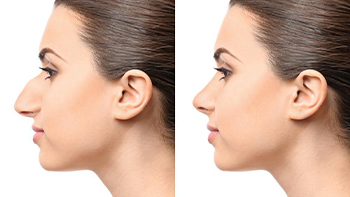
Rhinoplasty revision
Revised rhinoplasty, also known as secondary rhinoplasty, is a surgical procedure performed…

Rhinoplasty in Iran
Nasal plastic surgery, also known as “nose job”, is a surgical procedure that involves changing the shape or size of the nose.

Liposuction
Liposuction is a surgical procedure aimed at removing unwanted fat from certain areas of the body, such as the abdomen and buttocks.

Ear surgery
Ear surgery, also known as ear surgery, is a cosmetic surgery procedure determined to improve the appearance of the ears.

Brazilian butt lift (BBL)
Brazilian butt lift (BBL) is a cosmetic surgery procedure that involves the transfer of fat from one area of the body, such as the abdomen.

Breast removal
Breast lift, also known as breast fixation, is a surgical procedure to remove and reshape the sagging breast.

Beautification of the lips
Labiaplasty is a surgical procedure that involves reducing the size and/or changing the shape of the labia minora.

Skin care
Skin care includes cleansing and exfoliation and the use of creams and medical products…

Laser beauty
Employing laser to treat wrinkles, fine lines, scars, acne, pimples, moles, freckles, and unnatural growth of hair…

Tummy tuck
Tummy tuck, also known as tummy tuck, is a cosmetic surgery procedure determined to improve the appearance of the abdomen by removing…
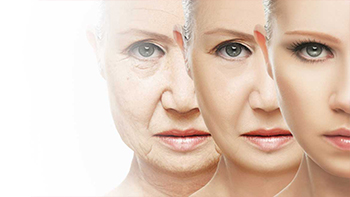
plastic surgery
Reconstructive surgery is performed to correct physical deformities caused by accidents, birth defects, or medical conditions.

Composite veneer
Composite veneer is a type of dental veneer made from composite resin material. The theme of use…

Dental implants
A dental implant is a surgical component placed in the jaw bone to support a dental replacement, such as a crown, bridge, or denture.



